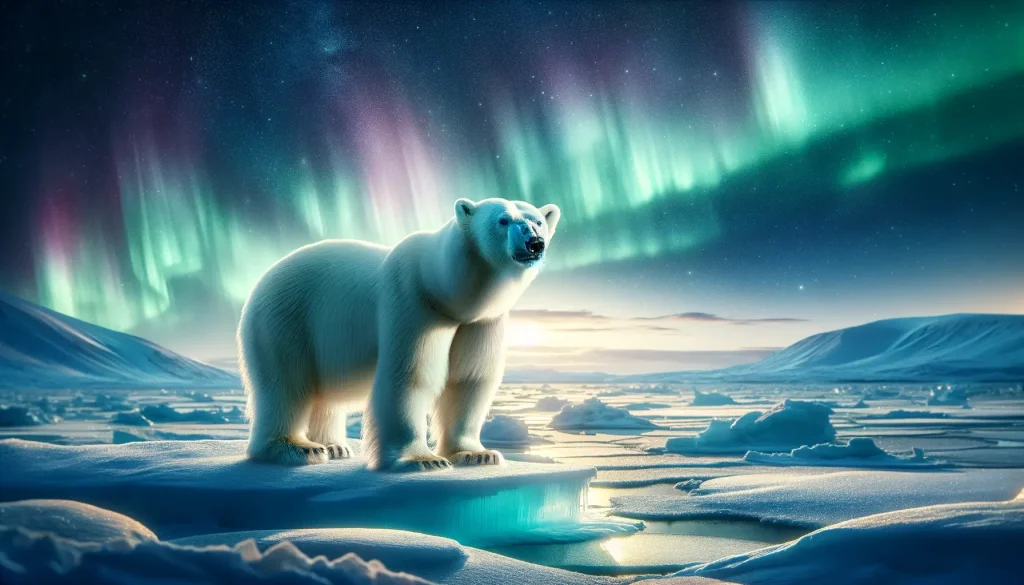
Imagine towering, majestic creatures roaming the vast, icy landscapes of the Arctic. Polar bears, the world’s largest land predators, are not just a symbol of the Arctic’s pristine beauty, but they’re also a fascinating example of nature’s adaptability. These remarkable animals have evolved to thrive in one of the harshest environments on Earth, with a suite of unique adaptations that make them perfectly suited to their frozen world. But, how do these magnificent creatures manage to survive and thrive in such extreme conditions? This article will delve into the astonishing world of polar bears, exploring their lifestyle, diet, and the challenges they face in the rapidly changing Arctic. What secrets do polar bears hold that allow them to reign as the kings of the Arctic, and what can they teach us about resilience and adaptation?
Your Top Polar Bear Questions Answered
Ever wondered about the daily life of a polar bear or how they manage to survive in such freezing temperatures? You’re not alone! Many of us have questions about these magnificent Arctic creatures. In this section, we’ll tackle some of the most frequently asked questions about polar bears. From their diet to their swimming abilities, get ready to dive into a world of fascinating facts.
How do Polar Bears Stay Warm? Polar bears have a thick layer of body fat and a dense, water-repellent coat that insulates them from the cold. This, along with a slower metabolic rate, helps them conserve energy and maintain warmth in freezing temperatures.
What Do Polar Bears Eat? Primarily, polar bears feed on seals. They are skilled hunters, often waiting patiently by a seal’s breathing hole to catch their prey. However, their diet can vary based on availability and season.
Can Polar Bears Swim? Yes, they are excellent swimmers! Polar bears can swim for long distances and steadily for many hours to get from one piece of ice to another. Their large paws are adapted for swimming, which they use like paddles in the water.
Are Polar Bears Endangered? Polar bears are classified as vulnerable. The biggest threat they face is habitat loss due to climate change, which affects the availability of their primary food source, seals.
How Long Do Polar Bears Live? In the wild, polar bears can live up to 25 years. However, their lifespan is influenced by factors like food availability, environmental conditions, and human-related threats.
What Time of Year Do Polar Bears Give Birth? Polar bears typically give birth in November or December. The cubs are born small and underdeveloped, and they remain in the den with their mother for several months before venturing outside.
Curious to learn more? Stay tuned as we explore deeper into the lives of these incredible Arctic survivors. What other unique adaptations do polar bears have to thrive in their icy habitat?
Unlocking the Mysteries of Polar Bear Behavior
Diving deeper into the world of polar bears, it’s time to explore their unique behaviors and traits that set them apart from other wildlife. Understanding these aspects not only fascinates us but also helps in the conservation efforts for these majestic creatures. Here, we uncover some of the lesser-known but equally intriguing aspects of polar bear life.
Polar Bear Communication
- Vocal Sounds: From growls to chuffs, polar bears communicate using various sounds, especially during social interactions or when expressing emotions.
- Scent Marking: They leave behind scents through footprints or by rubbing their body on the snow, which is a vital way of communicating with other polar bears.
Hunting Techniques and Diet
- Stalking: Polar bears use a technique called ‘still-hunting’, where they wait motionless for hours near a seal’s breathing hole.
- Alternative Foods: In the absence of seals, they may eat small mammals, birds, eggs, vegetation, and even garbage near human settlements.
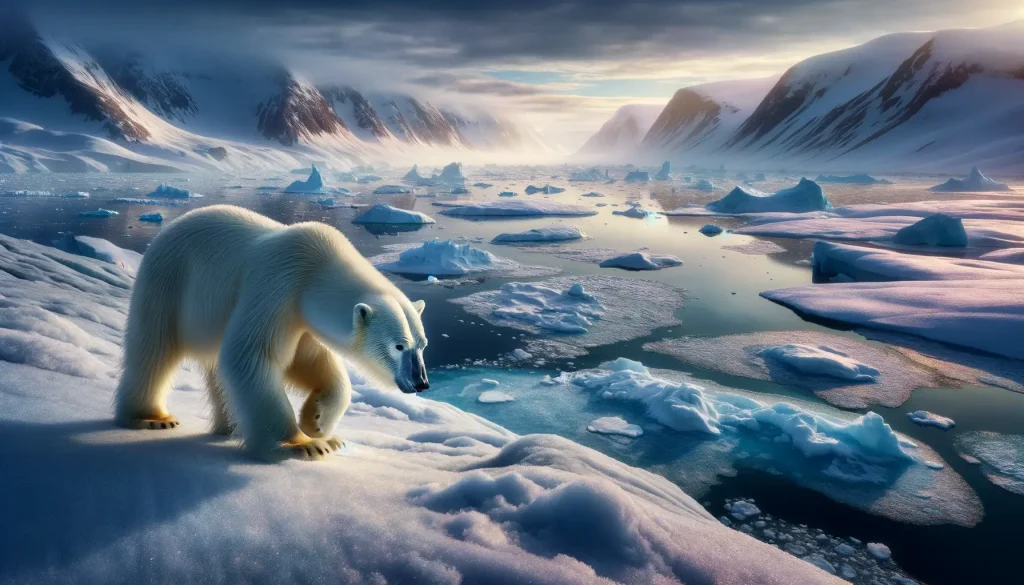
Mating and Reproduction
- Mating Season: Mating occurs from March to June, with males sometimes traveling long distances to find a mate.
- Denning: Pregnant females build dens in snowdrifts or on the sea ice, where they give birth and stay until the cubs are ready to venture outside.
Adaptations to the Arctic Environment
- Thick Fur: Two layers of fur and a thick layer of blubber for insulation.
- Black Skin: Their skin is black, absorbing heat from the sun, which is essential for surviving in the cold climate.
Threats to Survival
- Climate Change: Melting sea ice reduces hunting grounds and access to food.
- Pollution: Contaminants in the Arctic ecosystem can affect polar bear health.
- Human Interaction: Increased human activity in the Arctic poses various threats, including habitat disturbance and potential conflict.
Understanding these behaviors and adaptations is crucial for conservation efforts. By knowing how polar bears live, hunt, and interact with their environment, we can better appreciate their role in the Arctic ecosystem and the importance of protecting them. How can we contribute to the preservation of polar bear habitats and ensure their survival amidst changing environmental conditions?
Polar Bear Wonders You Didn’t Know
Step into the world of polar bears with these fascinating and lesser-known facts. From their incredible physical capabilities to surprising behaviors, there’s so much more to these Arctic giants than meets the eye. Let’s dive into some fun facts that will give you a whole new perspective on polar bears.
Amazing Physical Features
- Largest Land Carnivore: Males can weigh up to 1,500 pounds, making them the largest land carnivores.
- Oversized Paws: Their paws can measure up to 12 inches across, helping distribute weight on thin ice and aiding in swimming.
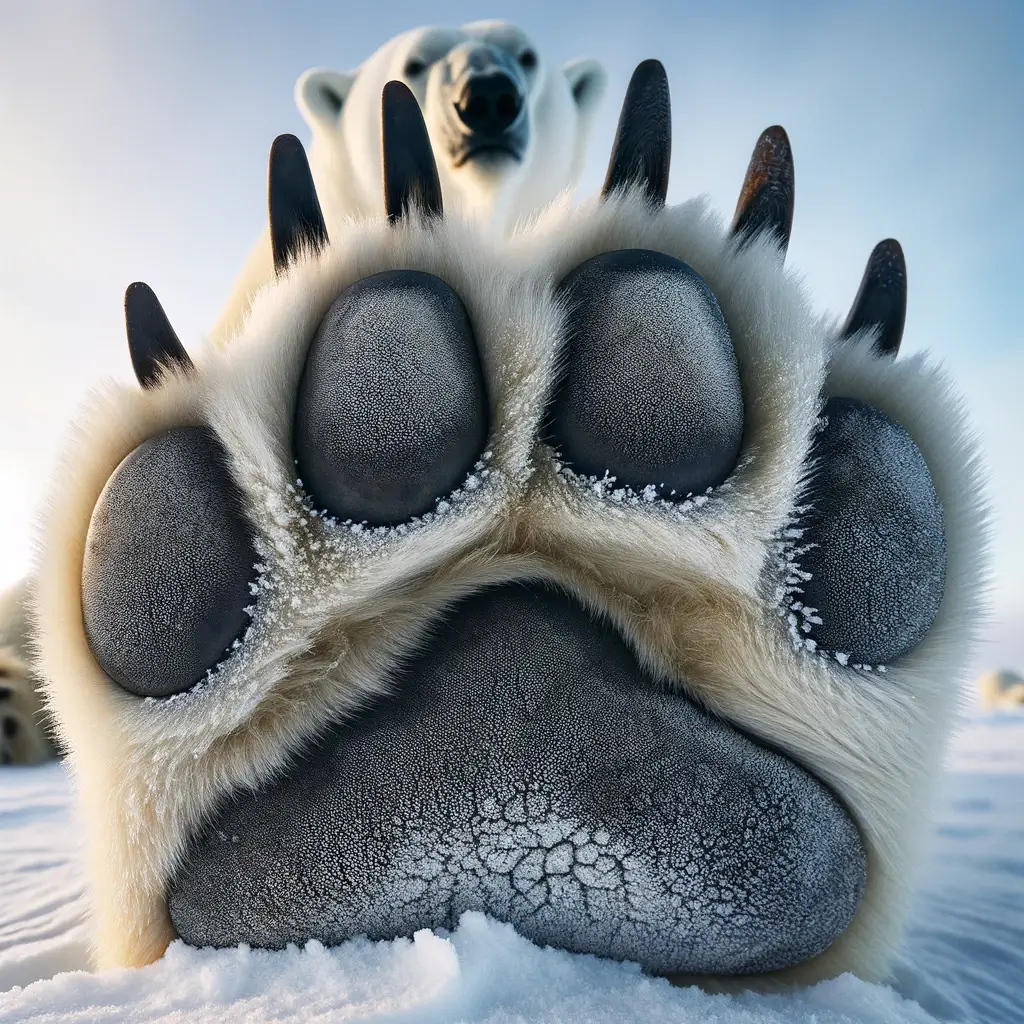
Unique Hunting Skills
- Exceptional Sense of Smell: Polar bears can smell a seal from up to 20 miles away and detect a seal in the water beneath several feet of compacted snow.
- Clever Tactics: They’ve been known to cover their black noses with their paws when hunting, blending in completely with the icy environment.
Fascinating Behaviors
- Playful Creatures: Young polar bears often engage in play-fighting, which is crucial for their development and honing their hunting skills.
- Strong Swimmers: They can swim continuously for days and have been recorded swimming for over 60 miles without rest.
Interesting Adaptations
- Hollow Fur: Each hair on a polar bear’s coat is hollow, reflecting light and trapping the sun’s heat to keep them warm.
- No Need for Freshwater: Polar bears can obtain all the freshwater they need through the metabolic breakdown of the fat in their seal diet.
Cultural Significance
- Arctic Mythology: In Inuit mythology, polar bears are revered and considered wise, powerful, and almost human.
- Symbol of Conservation: They have become a symbol of the impacts of climate change on wildlife and ecosystems.
These fun facts about polar bears not only highlight their extraordinary abilities but also emphasize their importance in the Arctic ecosystem. Their unique lifestyle and adaptations make them one of the most interesting and studied animals in the world. What can we learn from these magnificent creatures about resilience and adaptation in extreme environments?
Unraveling the Secrets of Polar Bear Fur
Polar bear fur is not just a layer of warmth; it’s a marvel of nature, packed with fascinating features that have intrigued scientists and animal lovers alike. In this section, we delve into the unique aspects of polar bear fur that make these creatures so well-adapted to their icy habitat.
Color Illusion
- Appears White: Although it looks white, polar bear fur is actually transparent. The hollow structure of each hair strand reflects light, giving the fur its snowy appearance.
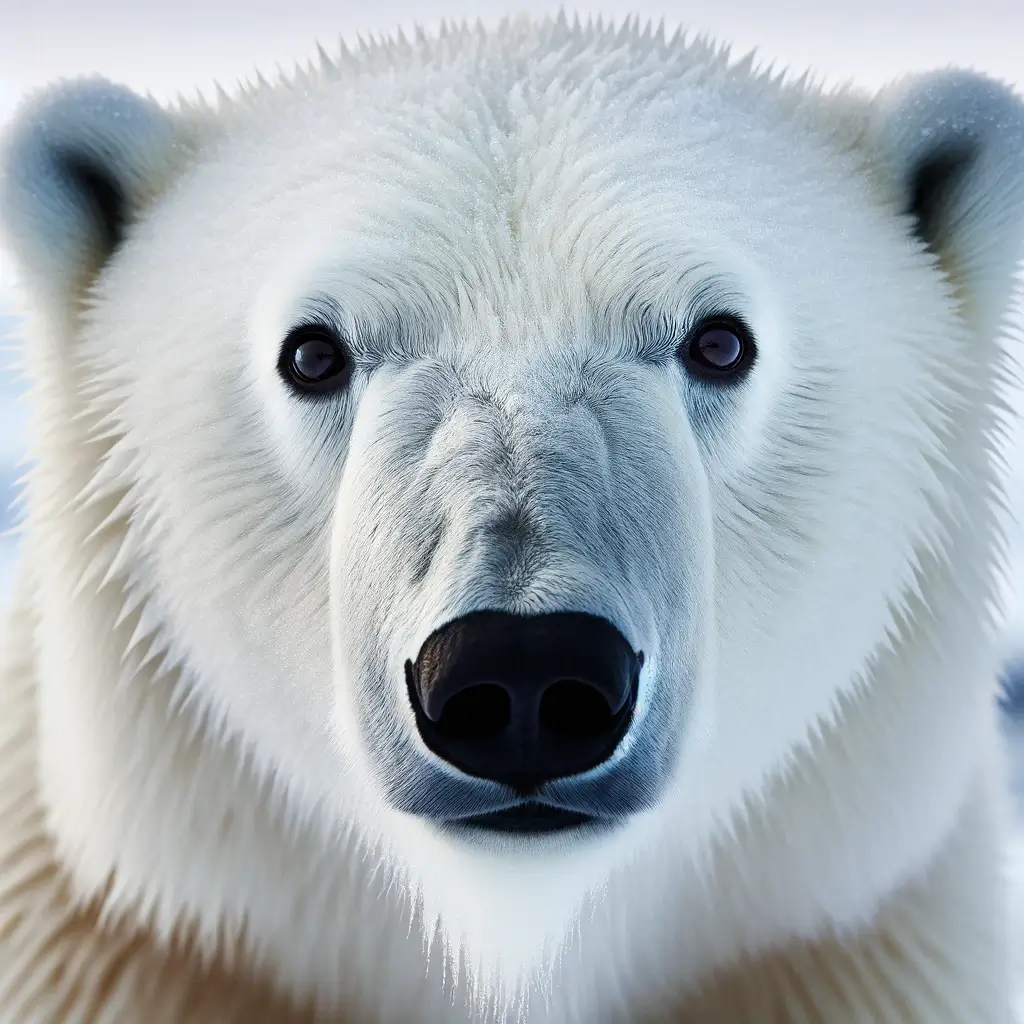
Thermal Insulation
- Insulating Properties: The fur, along with a thick layer of blubber, provides excellent insulation. This is crucial for maintaining body heat in freezing Arctic temperatures.
Water Repellent
- Oily and Water-Resistant: The fur is oily and repels water, which is vital for an animal that frequently swims in icy waters. This keeps them dry and warm even after swimming.
Camouflage
- Perfect Camouflage: The white appearance of the fur provides perfect camouflage against the snow and ice, making them formidable hunters.
Shedding and Growth
- Seasonal Shedding: Polar bears undergo a process of molting, shedding their fur seasonally to grow a new, thicker coat in preparation for winter.
Sensory Role
- Sensory Hairs: The fur is not just for insulation. The hairs are also sensitive to changes in the environment, helping polar bears detect prey and navigate the Arctic landscape.
Undercoat and Guard Hairs
- Two-Layer Coat: They have a dense undercoat for insulation and longer guard hairs on top, which protect the undercoat from water and ice.
The fur of a polar bear is a complex and vital component of their survival in the harsh Arctic environment. These fur facts not only illustrate the adaptability of polar bears but also reflect the intricate balance of nature in the Arctic ecosystem. How does the unique structure of polar bear fur contribute to their overall survival and efficiency as top predators in their habitat?
Polar Bear Cubs: The Arctic’s Adorable Future
After exploring the fascinating world of adult polar bears, it’s time to turn our attention to the next generation: the cubs. Polar bear cubs are not only adorable but also represent the future of their species in the rapidly changing Arctic environment. Let’s discover the captivating journey of these young bears from birth to adolescence.
Birth and Early Life
- Born Blind and Tiny: Cubs are born blind, weighing only about 1 pound, a stark contrast to their massive parents.
- Dependence on Mother: They are entirely dependent on their mother’s warmth and milk, as they spend the first few months in the den.

Learning to Survive
- First Steps Outside: Cubs venture outside the den around March or April, experiencing the outside world for the first time.
- Learning to Hunt: Mother bears teach their cubs to hunt and swim – essential skills for survival in the Arctic.
Playful Learning
- Role of Play: Cubs engage in playful activities, which are crucial for developing hunting and social skills.
- Sibling Bonding: If born in a litter with siblings, cubs learn to interact, bond, and develop through play-fighting.
Growth and Development
- Rapid Growth: Cubs grow quickly, thanks to the rich, fatty milk of their mother.
- Staying with Mother: They usually stay with their mother for about two and a half years before setting out on their own.
Future Challenges
- Facing the World: Once independent, young bears face the challenges of finding food and adapting to the changing environment.
- Climate Change Impact: With the Arctic environment changing, these cubs represent the adaptability and resilience needed for the future survival of the species.
Polar bear cubs embody the innocence and fragility of life in the Arctic. Their development from helpless infants into skilled survivors is a remarkable journey that highlights the importance of maternal care and learning in the animal kingdom. How does the upbringing of polar bear cubs equip them to face the challenges of the Arctic wilderness?
Safeguarding the Future of Arctic Icons
The upbringing of polar bear cubs, preparing them for the vast and challenging Arctic wilderness, directly ties into the broader theme of conservation. The protection of polar bear populations is not just about preserving an iconic species; it’s about maintaining the health and balance of the Arctic ecosystem. This section explores why conserving and protecting polar bears is crucial for our planet.
Indicator of Arctic Health
- Climate Change Barometer: Polar bears are often regarded as a barometer for the health of the Arctic. Their declining numbers indicate changes in the Arctic environment due to climate change.
Biodiversity Preservation
- Keystone Species: As top predators, polar bears play a critical role in maintaining the balance of the Arctic marine ecosystem. Their presence influences the population dynamics of their prey, primarily seals.
Cultural and Scientific Importance
- Cultural Symbol: For indigenous Arctic communities, polar bears hold significant cultural and spiritual value.
- Scientific Interest: Researchers study polar bears to understand Arctic ecology and the impacts of climate change on various species.
Challenges in Conservation
- Habitat Protection: Melting sea ice, a consequence of global warming, is the primary threat to polar bears, as it reduces their hunting grounds.
- Reducing Human-Bear Conflicts: As their natural habitat shrinks, polar bears are increasingly coming into contact with human populations, leading to conflicts.
Global Efforts and Actions
- International Agreements: Agreements like the International Agreement on the Conservation of Polar Bears and Their Habitat aim to protect polar bear habitats.
- Research and Monitoring: Ongoing research and monitoring are essential to understand polar bear populations and their health, guiding conservation efforts.
Individual and Community Actions
- Climate Change Mitigation: Individual efforts to reduce carbon footprints contribute to slowing down global warming, indirectly helping polar bears.
- Supporting Conservation Organizations: Donations and support to organizations working on polar bear conservation can make a significant difference.
The protection of polar bears is intricately linked to the broader issue of environmental conservation and climate change. By safeguarding these majestic creatures and their habitat, we not only ensure their survival but also the health of the entire Arctic ecosystem. How can we, as individuals and communities, contribute more effectively to the conservation of polar bears and the Arctic environment?
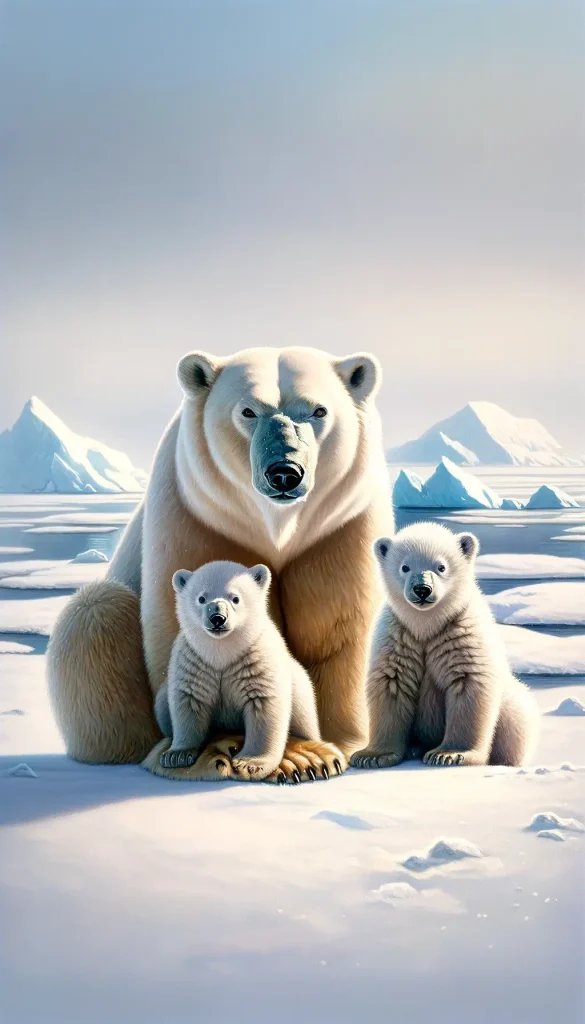
Celebrating International Polar Bear Day
February 27, 2024, marks another International Polar Bear Day, a special day dedicated to the majestic kings of the Arctic. This day is not just a celebration but also a call to action to raise awareness about the challenges polar bears face and the importance of Arctic conservation. Let’s delve into what makes this day significant and how it contributes to the welfare of polar bears.
Raising Awareness
- Global Spotlight: International Polar Bear Day puts a spotlight on the plight of polar bears, highlighting the impacts of climate change and the importance of Arctic conservation efforts.
Educational Initiatives
- Engaging Activities: Various organizations host educational programs, webinars, and interactive sessions to educate people about polar bears and the Arctic ecosystem.
- Sharing Knowledge: It’s an opportunity to share scientific research and knowledge about polar bear behavior, habitat, and conservation strategies.
Community Involvement
- Fundraising Events: Many conservation groups organize fundraising events to support research and conservation projects for polar bears.
- Community Actions: People are encouraged to engage in activities that reduce carbon footprints, such as energy-saving practices, to contribute to the mitigation of climate change.
Global Participation
- Worldwide Events: Zoos, educational institutions, and conservation organizations around the world host events to celebrate this day.
- Social Media Campaigns: Hashtags and online campaigns spread awareness and encourage global participation in conservation efforts.
International Polar Bear Day serves as a crucial reminder of our responsibility to protect these magnificent creatures and their habitat. By participating in this day, we reinforce our commitment to making a positive change for polar bears and the broader environment. Read more about International Polar Bear Day on February 27, 2024.
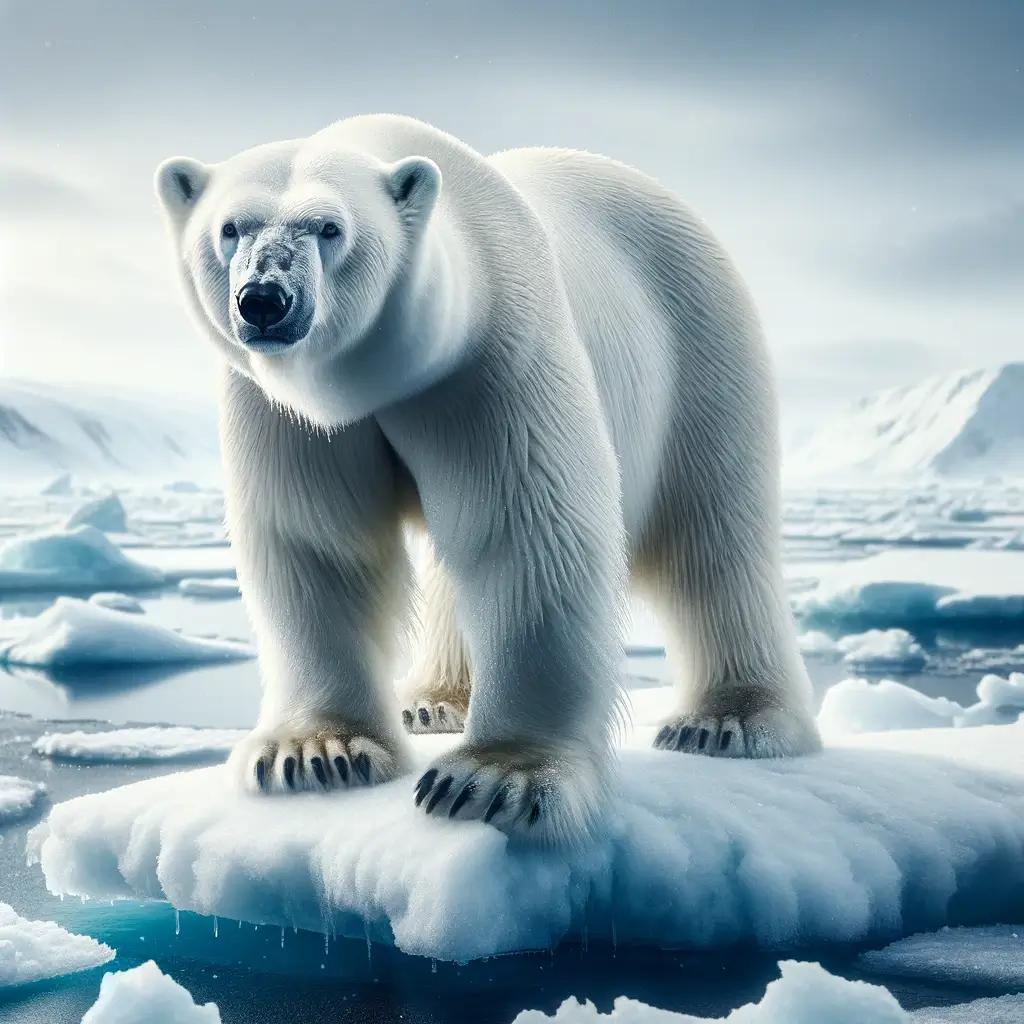
Beginner Guide to Raising Quail at Home
What are the Signs of a Dog Concussion?
What Causes Your Dog’s Ears to Smell Bad?
When your dog’s ears start to emit an unpleasant odor, it might leave you puzzled…
Methimazole Treatment for Cat Hyperthyroidism
Methimazole plays a crucial role in managing feline hyperthyroidism, a condition marked by an overactive…
Got Hummingbirds in your Backyard? Here’s How to Care for Them.
Why Does Your Cat Pee Outside the Litter Box?
Cat’s Litter Box Issues It’s not uncommon for cat owners to face the frustrating dilemma…




